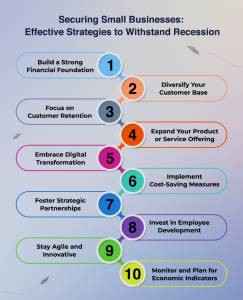Here are five possible ways to learn from your email zombies, a.k.a. your attrited customers who still get your emails.

Now that everybody on your marketing team is back from their summer distractions, it’s time to get down to serious business – how to make more money so your annual revenue projection stays on course.
In an earlier column, I gave you a 5-point checklist to get approval for a tech project that will help you close the gap between projected and expected revenue.
This time, we’ll tackle a big revenue-sucker: customer churn.
Churn is a fact of marketing life, but you can reduce it if you nail down your churn variables and develop a plan to tackle them head-on.
More than email reactivation
While this is the tactic many brands take when trying to squeeze out more revenue from their mailing lists, I’m on the fence about reactivating attrited email address. Too often it takes a lot of effort and delivers low returns.
That doesn’t mean you should take them off your list. Your non-responders have something valuable to tell you: the reasons why your brand became irrelevant to them.
With the holiday season approaching, make sure you have identified and dealt with the reasons people went off your brand. This will take some time, but the result will be a complex segmentation model that helps you shape your message for different audiences.
Why segmentation matters
If you don’t use even basic segmentation, then you’re lumping your non-buyers, occasional buyers and “only with a discount” buyers with your product-specific, frequent and high-order-value customers.
Plus, you’re sending “Buy now” messages to your attrited and inactive customers — a message that means nothing to them.
This could be one reason why your attrition rate is so high – you’re treating everyone the same. That tactic might work when you’re divvying up snacks among your kids, but it doesn’t fly in business.
Below are five possible ways to learn from your email zombies, a.k.a. your attrited customers who still get your emails.
1. Gather your data.
This must be your first step. Data is the lifeblood of your digital marketing program. Don’t do anything until you know how much data you have on all of your customers, but especially your attrited customers. You can’t do any database segmenting or message targeting without it.
Review the data you can access without going through an outside party (what you control and what you can gather from your email platform) as well as the customer data your CRM or database teams can provide.
Review your company’s data dictionary. Define what you have and how you can use that data to identify and learn more about your zombies.
2. Bring out your dead.
Your attrited customers — the ones who have moved on to other brands but never unsubscribed, whose emails don’t bounce but also don’t register opens and clicks — can give you great insights into why they disconnected.
Look for consistencies in your data. Did they fall off at Marker 4 or 5 in your email sequence? Did they leave traces showing that they were about to leave? Maybe they opened every email for a week or so, then once a week, then one or two out of every 10, and then nothing. Use your data to find the trails they left.
Also, dive deeper into your demographic data on your customers. Is your list more female or male? Do they live in one region? Are they more or less likely to have children? You have to answer the question, “Why did they unsubscribe? Why did they go silent?”
Find that answer.
3. Define your customer types.
Besides understanding your attrited customers, you have to know the rest of your customer groups.
Traditional retail models will group customers by incentive (those who shop without discounts or other nudges and those who need a sweetener to act), by frequency (monthly, annually or semi-annually, only on special occasions), by consideration (impulse versus long consideration or research cycles) and other factors.
This is critical information that every marketer must have. If you don’t know your types, take a minute now (really, stop reading and do it) to write out a list of buyers types that both are related to your business (the ones that turn up in your data) and not related.
You might find that impulse buying has nothing to do with your email, that what drives purchases is fulfillment of your brand promise through your product and service quality. That’s your unique selling proposition.
After you list your groups, study how you’re mailing to them. If you don’t appeal to these groups in your email marketing content, you’re setting up a disconnect that leads to attrition.
Your job, then, is to provide relevance through your message. “Relevance” comes down to this: what you do to make your subscribers and customers feel that you know them, you understand them, and you care about them.
After you create your new customer groups, adapt your groups to the segments you can find in your data, and update your segmentation plan.
4. Change your messaging from group to group.
Yes, this means moving away from basic broadcast email or “first-name last-name” personalization. Instead, think about how you can change your message to meet each group’s needs, goals and concerns.
It could take a change of voice, different images, less (or more) text, different offers (discount versus BOGO, information versus promotion). All of these are intended to help your message more closely reflect each group.
To discount or not to discount? One reason why marketers often miss their revenue numbers is that they believe everybody wants a discount. What happens when you give a discount to someone who doesn’t need one? You eat into your profit margin, and your bottom line suffers.
This is why you must use your data to identify the people who don’t need a discount. It’s also why you shouldn’t base your broadcast email program on distributing discounts in every message.
At certain times of the year, of course, people expect discounts. That’s where your customer profile could change, but long-term research will show you which customers return to full-price buying and which ones really do need that nudge.
5. Test out your assumptions before the holiday season begins.
The corollary to this is “Test multiple times.” Sure, you tried it once. It failed. You gave up. So what? Go back and try another message with different customers, like the ones who haven’t turned into zombies yet.
Test the message, program, content or automation. Did your change go against what you saw in terms of behavior, sales, engagement in your attrited groups? Did it deliver the lift you expected? Yes? Great! No? Try again.
Wrapping up
You have many ways to get more revenue in the holiday season and to meet or exceed the revenue projections you set back in January. For many marketers, the answer is “Send another email.” (Or, that’s what they’re told to do.)
But you have many other options to increase revenue or meet other KPIs. Look at the strategy you’re using to achieve your goal and the tactics that put your strategy into action. Your data might be suggesting a better path to success. You just have to look for it.
Once you have your data for your new segmentation models, get them into your ESP ASAP. That could take time – which you probably won’t have in the run-up to Black Friday when the craziness launches.
Contrary to popular belief, your zombies can help you find those new messages. You just need to understand them and put them to work to improve your digital marketing program.
Opinions expressed in this article are those of the guest author and not necessarily Marketing Land. Staff authors are listed here.
Marketing Land – Internet Marketing News, Strategies & Tips
(31)
Report Post




